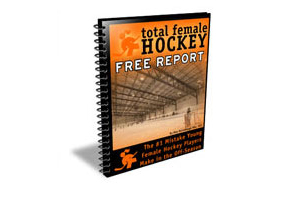How To Fix Knee Pain In Girls Hockey Players
 Osgood Schlatter Disease (or O-S for short). This is a knee condition that many female hockey players deal with when going through their growth spurts and it can be very frustrating to deal with if not handled properly. The condition occurs in players aged 11-15, coinciding with periods of growth spurts. During a growth spurt, where the bones grow faster than the muscles and tendons do, there is increase stress on the patellar tendon that attaches the quadriceps muscle at the front of the thigh to the tibial tuberosity just below the knee.
Osgood Schlatter Disease (or O-S for short). This is a knee condition that many female hockey players deal with when going through their growth spurts and it can be very frustrating to deal with if not handled properly. The condition occurs in players aged 11-15, coinciding with periods of growth spurts. During a growth spurt, where the bones grow faster than the muscles and tendons do, there is increase stress on the patellar tendon that attaches the quadriceps muscle at the front of the thigh to the tibial tuberosity just below the knee.
Knee pain usually happens during running, jumping, squatting, and especially ascending or descending stairs and during kneeling. Initially the pain is mild and comes-and-goes but it can also be more severe and continuous. The symptoms usually go away with treatment, but may be ongoing for 12–24 months before the bones and muscles are finished maturing.
Enough of the medical mumbo-jumbo….how do we fix it?
First, the good news…
Although there is a lot of contact in hockey, it is technically not an impact sport. Girls with O-S usually have a lot of pain during running and jumping. This is because of the large amount of force that goes through the knee when they land on each stride or jump. Because hockey is a gliding sport, they don’t experience the same amount of impact with each stride. Many girls hockey players who feel pain from O-S when playing running-based sports will not feel pain while skating.
The bad news….
The recommended cure for the type of knee pain that results from Osgood-Schlatter disease is rest. Right….rest during the hockey season. I don’t know of many girls hockey players who are going to take a week or two off during the regular season to rest. Asking a young athlete to rest may be good for them physically, but it is absolute torture psychologically.
So what should a player do if her knee pain is preventing her from feeling and playing her best?
1. Stretch!
The quadriceps and hamstring muscles are going to be very tight in girls hockey players as they go through their growth spurts. Stretching these two muscle groups every single day (multiple times a day is preferable) is going to keep these muscles loose and decrease the amount of tension that is on the knee joint.
2. If it hurts, don’t do it (with exceptions)
When the pain is bad, try to avoid running and jumping as those are going to have a huge impact on the knee joint. However, players should still be able to participate in off-ice training. When players perform exercises like lunges and squats properly, there should be little pain through the knee.
Players must focus on keeping their weight through their heels when doing squatting and lunging movements instead of pushing up through their toes. This is tough for young hockey players to do since they play such a quad-dominant sport and athletes that are quad-dominant tend to push through their toes instead of their heels. Any good off-ice training specialist should be able to modify any squatting and lunging exercise so as to minimize the impact on a player’s knee.
There is no easy answer – but the key is going to be icing, rest (when appropriate), stretching and continuing to train off the ice.
For an off-ice training program that will keep you feeling and playing your best all season long, and will avoid putting too much pressure on injured knees, visit:
=> Click Here For The Total Female Hockey Training System <=
Work Hard. Dream BIG. Train Smart.
~ Coach Kim

